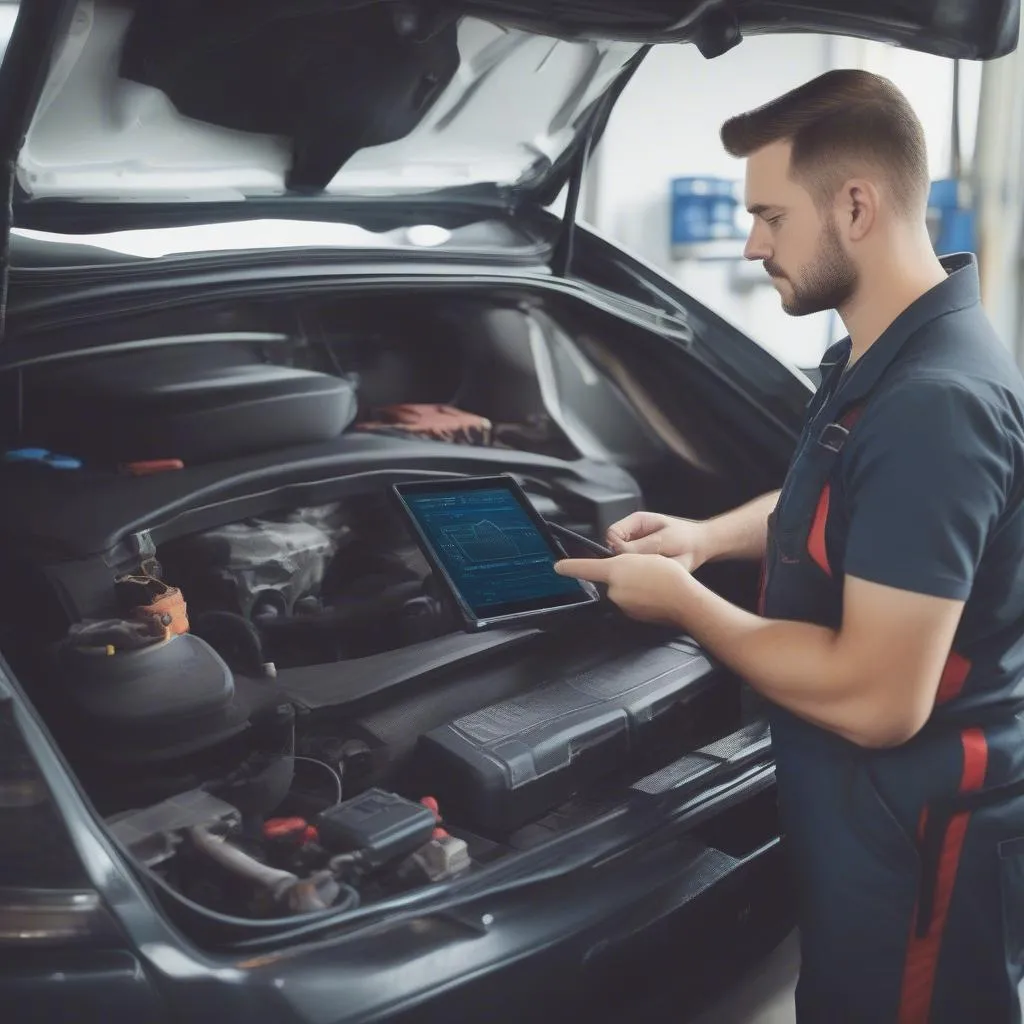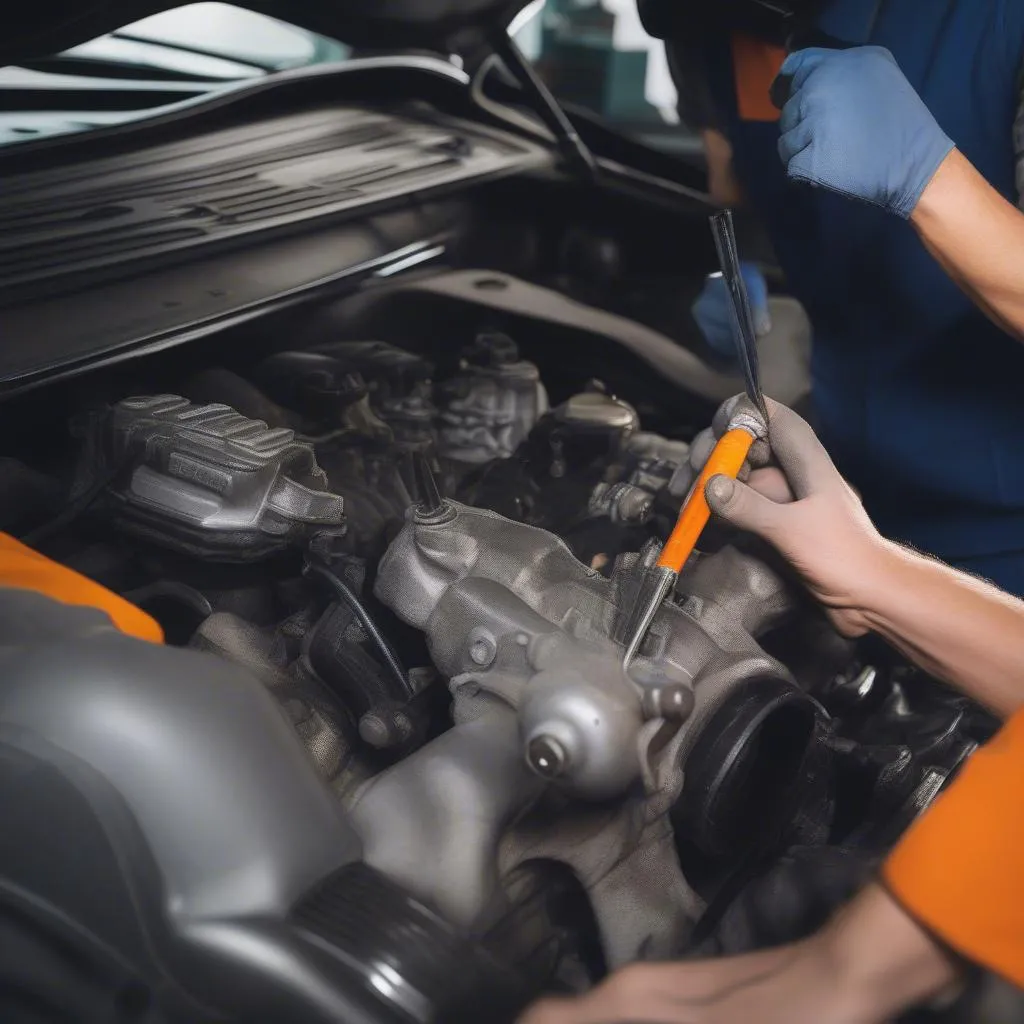Have you ever experienced the dreaded check engine light illuminating on your dashboard? It can be a daunting experience, leaving you wondering what’s wrong with your car and what you should do next. Luckily, with the help of OBD (On-Board Diagnostics) codes, you can gain valuable insights into the potential issues.
Understanding OBD Codes: What They Mean and Why They Matter
OBD codes are diagnostic trouble codes that are stored in your car’s computer system. They are a way for your vehicle to communicate with you, providing information about any malfunctions or problems detected within the engine, transmission, or other systems.
From a car mechanic’s perspective, OBD codes provide a roadmap for diagnosing car problems. Each code represents a specific issue, allowing mechanics to quickly identify the root cause of the problem and recommend the appropriate repair.
From a technical perspective, OBD codes are generated based on sensor data, allowing the car’s computer to monitor various aspects of its operation, including:
- Engine performance: Fuel mixture, ignition timing, sensor readings
- Emissions: Oxygen sensor readings, catalytic converter efficiency
- Transmission: Gear shifting, fluid pressure, sensor readings
- ABS and safety systems: Brake pressure, wheel speed, sensor readings
From an economic perspective, understanding OBD codes can empower you to address car issues proactively, potentially saving you money on costly repairs. By catching minor problems early on, you can prevent them from escalating into more serious issues, minimizing the need for extensive repairs and downtime.
How to Look Up Obd Codes: A Step-by-Step Guide
Now that you understand the importance of OBD codes, let’s delve into how to look them up. There are a few different methods you can use:
1. Using a OBD Code Reader:
- This is the most common and straightforward method. OBD code readers are inexpensive devices that plug into your car’s OBD-II port, which is typically located under the dashboard.
- Once connected, the code reader will retrieve the stored codes and display them on its screen.
- Most code readers come with a built-in database that provides basic definitions of the codes.
- To find more detailed information about the codes, you can often search online using the code and your car’s make and model.
2. Using a Smartphone App:
- Many smartphone apps are available that can read OBD codes, eliminating the need for a separate code reader.
- These apps connect to your car’s OBD-II port via a Bluetooth adapter.
- They offer similar features to dedicated code readers, allowing you to view and look up the codes.
- Some apps even provide additional features, such as historical data logging and performance monitoring.
3. Using a Car Dealer Scanner:
- If you have a European car, you may need a specialized dealer scanner to retrieve and interpret OBD codes.
- These scanners are designed to work with the specific diagnostic protocols used by European manufacturers.
- They provide a more comprehensive level of diagnostics, offering access to more detailed information and allowing you to clear codes after repairs.
Common OBD Code Questions:
What are the most common OBD codes?
Some of the most common OBD codes are related to:
- P0171: System too lean (Bank 1)
- P0174: System too lean (Bank 2)
- P0300: Random/Multiple Cylinder Misfire Detected
- P0420: Catalyst System Efficiency Below Threshold (Bank 1)
- P0455: Evaporative Emission System Leak Detected
What does a “P” code mean?
“P” codes are related to the powertrain of your car, which includes the engine, transmission, and emission control systems.
What does a “C” code mean?
“C” codes are related to the chassis of your car, which includes the brakes, steering, suspension, and airbags.
What does a “B” code mean?
“B” codes are related to the body of your car, which includes features like the lights, windows, and radio.
What to Do After Looking Up an OBD Code:
Once you have looked up an OBD code, you can begin troubleshooting the issue. Here are some general guidelines:
- Consult your car’s owner’s manual: The manual often provides detailed information about specific codes and troubleshooting steps.
- Search online: Use the code and your car’s make and model to find relevant information and forums.
- Contact a mechanic: If you are unable to diagnose or fix the problem yourself, it’s best to consult a qualified mechanic.
Need Assistance With OBD Codes?
If you’re facing a check engine light and want to understand what’s happening with your car, don’t hesitate to reach out to our team of experts at Tech Car USA.
 obd-codes-lookup
obd-codes-lookup
We offer comprehensive diagnostics services, including:
- OBD code reading and interpretation
- Detailed diagnostics reports
- Repair recommendations
- Expert advice
Contact us via Whatsapp at +84767531508 for immediate assistance.
We’re here to help you keep your car running smoothly.
 car-maintenance
car-maintenance
Explore Our Other Resources:
- Lookup OBD Codes: https://techcarusa.com/lookup-obd-codes/
- OBD Codes Lookup: https://techcarusa.com/obd-codes-lookup/
- HH OBD Advanced APK: https://techcarusa.com/hh-obd-advanced-apk/
- How to Connect OBD-II Bluetooth: https://techcarusa.com/how-to-connect-obd-ii-bluetooth/
- BMW OBD Setup: https://techcarusa.com/bmw-obd-setup/
Let us know your thoughts on this guide in the comments below! We encourage you to share your own experiences with OBD codes and any tips you’ve learned along the way.